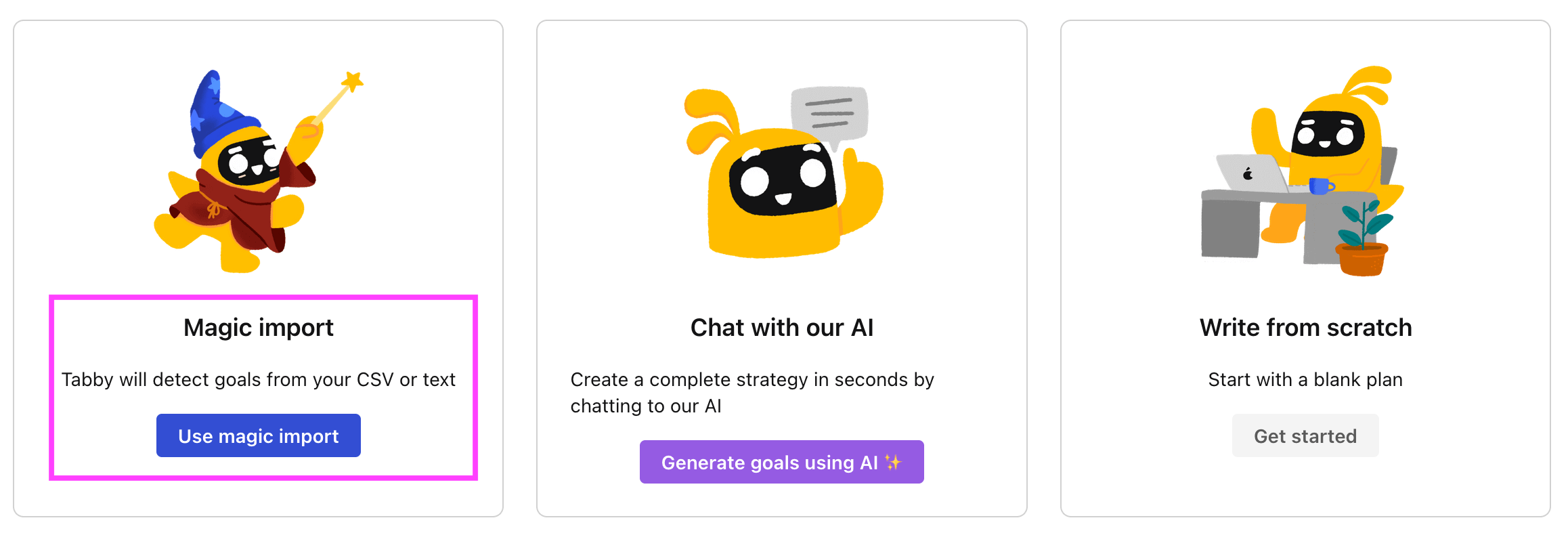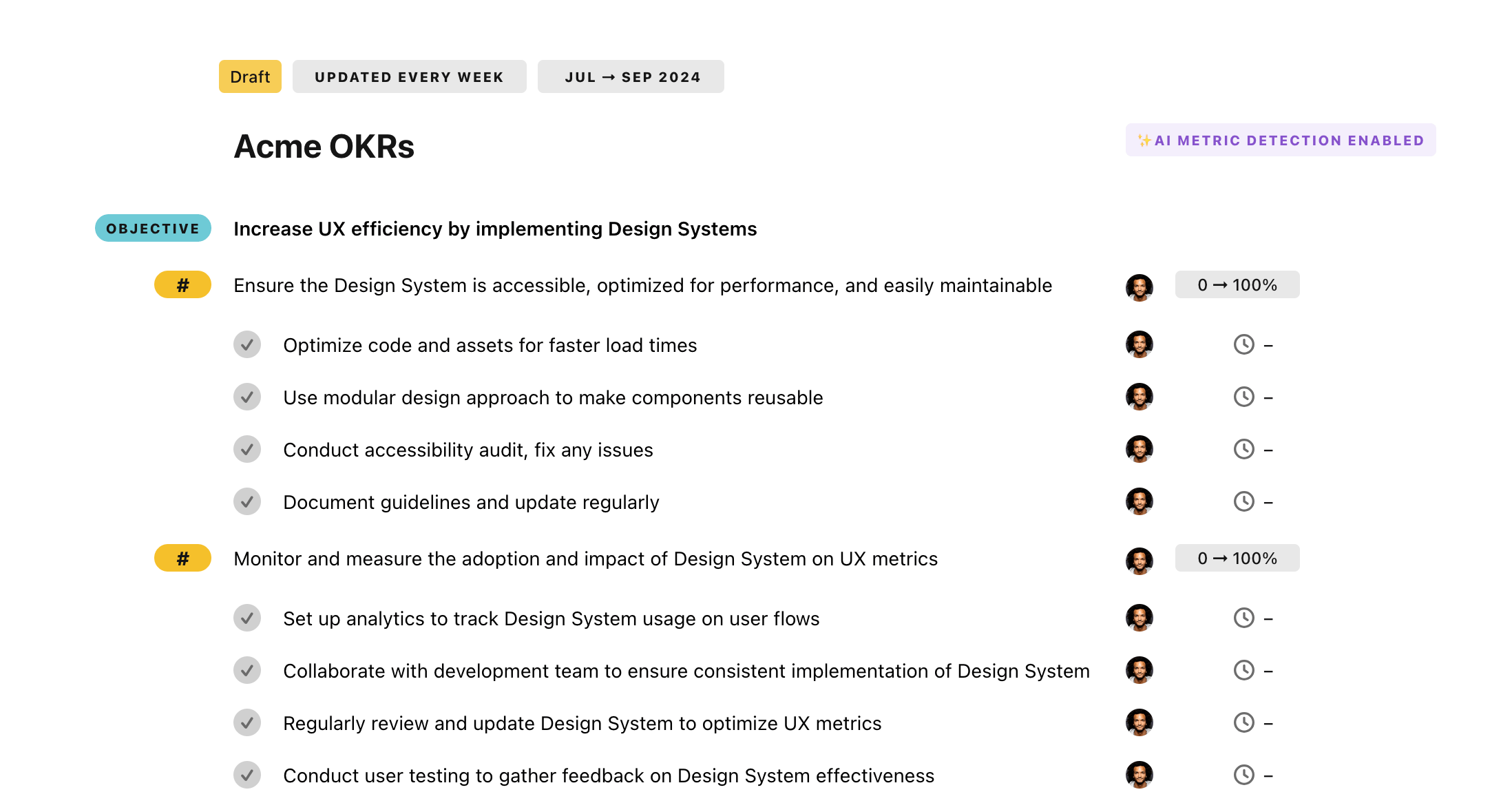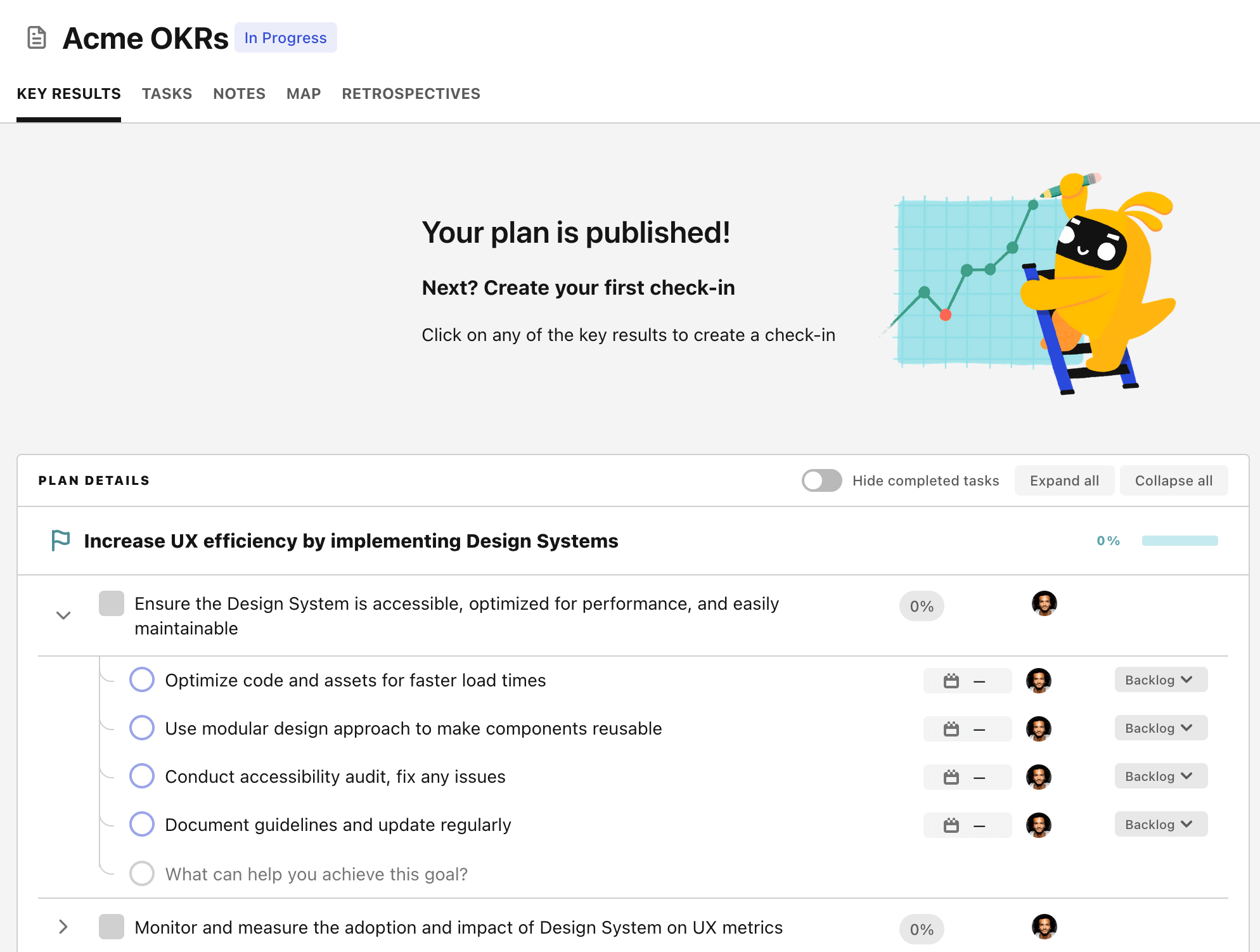OKR template to improve overall efficiency and effectiveness of data management
Your OKR template
Another objective of this OKR is to implement an automated data backup system in all databases. Measures towards this goal include scheduling standard automated system backups and training IT staff to handle the backup system. Reliable and up-to-date data backup systems will help ensure data retention and recovery.
A crucial initiative of this OKR is to purchase and install reliable automated data backup software. Keeping all data secure is crucial for any business. This preventative measure will help avoid massive losses due to data breaches or accidental losses, making the data management system more secure and reliable.
Finally, the OKR aims to reduce data processing errors by 20%. This will be achieved by conducting regular staff training to handle data and implementing advanced error-checking software. Increasing frequency of system audits will also help in identifying recurring issues and implementing corrective measures.
ObjectiveImprove overall efficiency and effectiveness of data management
KRIncrease staff proficiency in data analytics tools by conducting 3 comprehensive workshops
KRImplement automated data backup system in all databases
Schedule regular automatic system backups
Train IT staff in managing the backup system
Purchase and install reliable automated data backup software
KRReduce data processing errors by 20%
Conduct regular staff data-handling training
Implement advanced error checking software
Increase frequency of system audits
How to edit and track OKRs with Tability
You'll probably want to edit the examples in this post, and Tability is the perfect tool for it.
Tability is an AI-powered platform that helps teams set better goals, monitor execution, and get help to achieve their objectives faster.
With Tability you can:
- Use AI to draft a complete set of OKRs in seconds
- Connect your OKRs and team goals to your project
- Automate reporting with integrations and built-in dashboard
Instead of having to copy the content of the OKR examples in a doc or spreadsheet, you can use Tability’s magic importer to start using any of the examples in this page.
The import process can be done in seconds, allowing you to edit OKRs directly in a platform that knows how to manage and track goals.
Step 1. Sign up for a free Tability account
Go tohttps://tability.app/signup and create your account (it's free!)
Step 2. Create a plan
Follow the steps after your onboarding to create your first plan, you should get to a page that looks like the picture below.

Step 3. Use the magic importer
Click on Use magic import to open up the Magic Import modal.
Now, go back to the OKR examples, and click on Copy on the example that you’d like to use.

Paste the content in the text import section. Don’t worry about the formatting, Tability’s AI will be able to parse it!

Now, just click on Import from text and let the magic happen.

Once your example is in the plan editor, you will be able to:
- Edit the objectives, key results, and tasks
- Click on the target 0 → 100% to set better target
- Use the tips and the AI to refine your goals
Step 4. Publish your plan
Once you’re done editing, you can publish your plan to switch to the goal-tracking mode.

From there you will have access to all the features that will help you and your team save hours with OKR reporting.
- 10+ built-in dashboards to visualise progress on your goals
- Weekly reminders, data connectors, and smart notifications
- 9 views to map OKRs to strategic projects
- Strategy map to align teams at scale